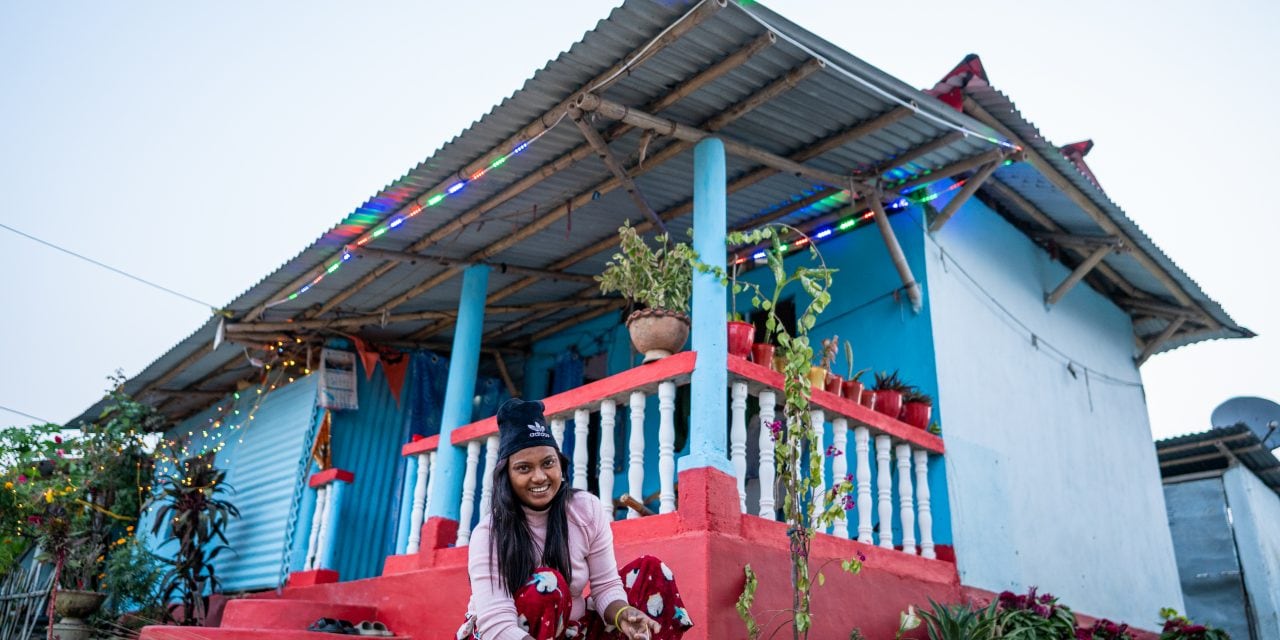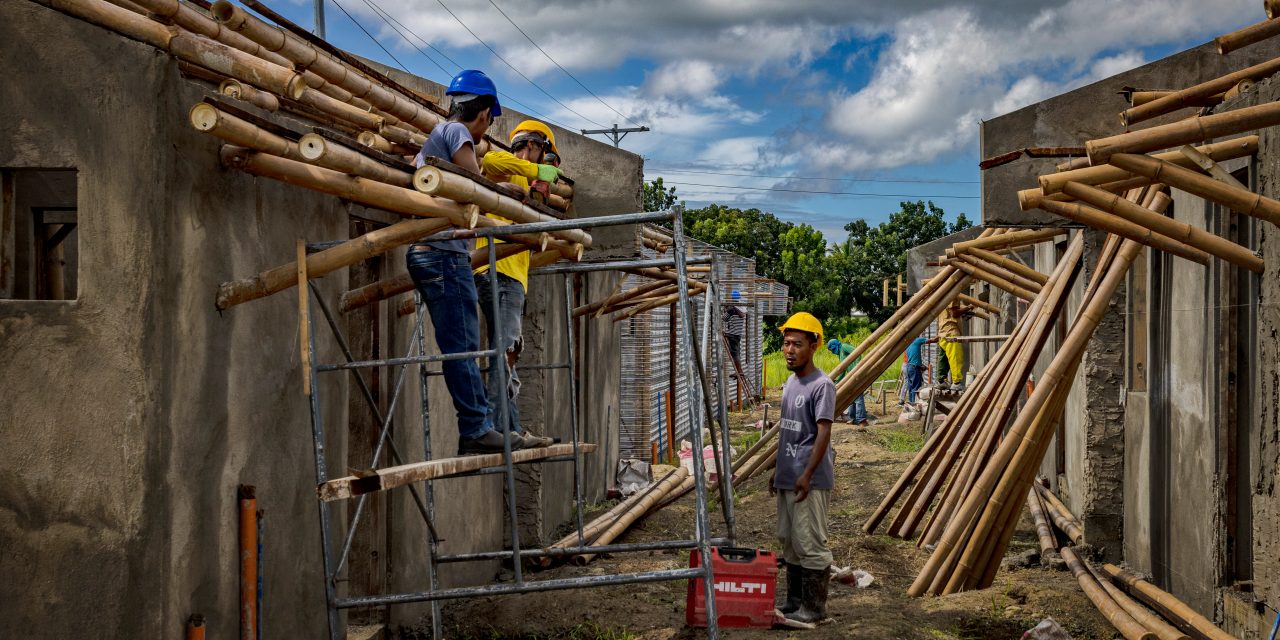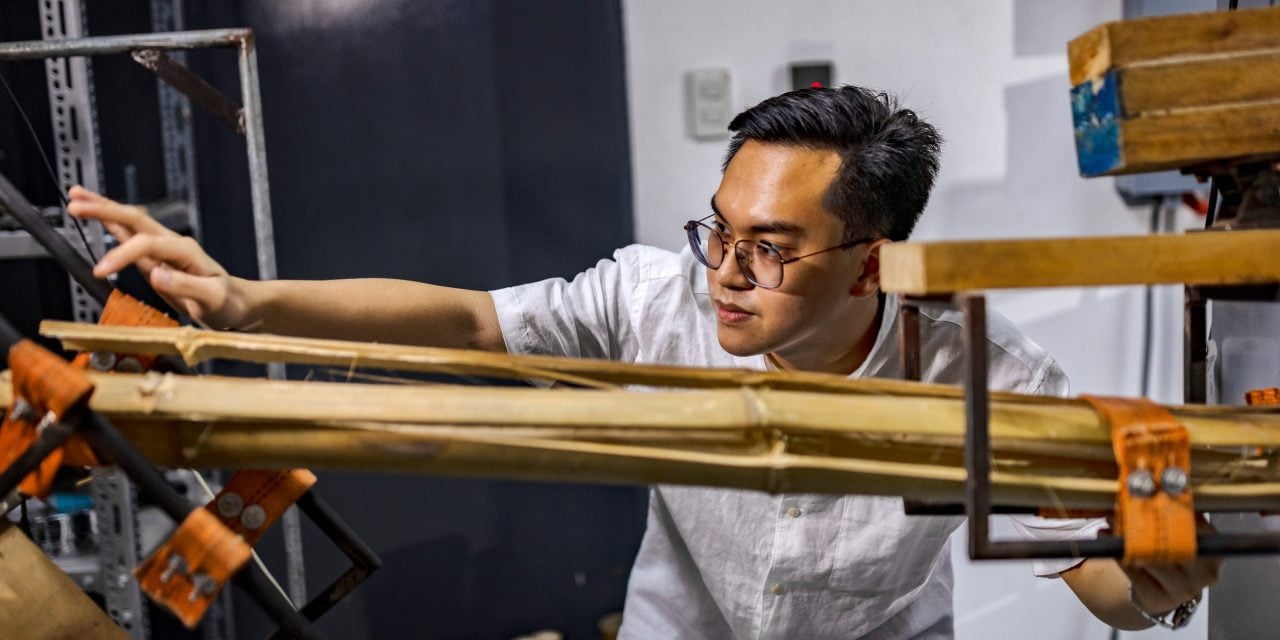- Home
- Company
- Newsroom
- Hilti Stories
- Building Stronger and Safer Communities with Bamboo

Building Stronger and Safer Communities with Bamboo
How the BASE Bahay Foundation is pioneering sustainable housing
Produced by the Hilti Foundation | September 18, 2024
There are some regions of the world where natural disasters occur regularly, so access to safe and disaster-resilient housing can be life-saving.
In 1999, a major earthquake hit Colombia and resulted in the loss of many lives and several collapsed buildings. However, Luis Felipe Lopez, then an aspiring civil engineer, noticed that amidst the devastation, there were some structures that remained standing.
He remembers wondering how 100-year-old bamboo houses survived the calamity: "At that time, I was writing my thesis on bamboo frame construction, and I knew that this subject would no longer be just a research project for my thesis, it would become my life's work.”
In 2012, Lopez, was approached by the Hilti Foundation to work for them as a consultant and test bamboo technology in the Philippines. Two years later, the BASE Bahay Foundation was established and has since evolved into a global competence center for bamboo that is now celebrating it's 10th year.
Today, Lopez is the general manager of BASE Bahay. He has dedicated years of his career to developing an innovative and sustainable building technology that can not only provide those in need with basic shelter, but also give them safe refuge in times of natural disasters.
Building a Sustainable Future with Bamboo
The Cement and Bamboo Frame Technology (CBFT) developed by BASE Bahay, is a hybrid construction method that integrates the natural flexibility and strength of bamboo with the structural benefits of cement.
The process begins with the careful selection of bamboo species and treatment of the material to ensure it meets high construction standards. The bamboo stalks are subsequently filled with concrete, forming a strong skeleton for buildings. It guarantees structural integrity and allows for a quick and adaptable assembly, resulting in homes that are both resilient and aesthetically pleasing.
Watch: How CBFT Houses are built

Luis Felipe Lopez
General Manager of the BASE Bahay Foundation

In countries like the Philippines and Nepal, where housing shortages and natural disasters are prevalent, houses built with this new technology offer safer and more resilient shelters for many families. Traditionally, bamboo has long been used as a common building material in these countries, due to its ability to withstand the forces of nature.
One mother from Nepal, Pramila, shares her firsthand experiences of the difficulties of living in a fragile home. Each time it rained, her home was under constant threat of collapsing. This made daily life a struggle and deprived her children of basic sanitation facilities. Everything changed when they moved into a new, reliable house made using CBFT.
"Having a stable home has left a profound and positive impact on our lives," Pramila shared. "It fills my heart with pride to see my children grow up in a safe and nurturing environment. I'm grateful for the opportunities I've had and will continue to strive for a better future for my family and community."
The Life-Changing Impact of Bamboo Homes
In local communities, future homeowners actively participate in building their houses, empowering them with pride and ownership. The construction process often involves training for local workers which also creates jobs and develops their skills.
The Hilti Foundation has a long-standing commitment to innovating and using sustainable and affordable housing solutions. Bamboo, being a rapidly growing renewable resource with exceptional environmental benefits, stands at the center of this engagement.
Johann Baar
Director Affordable Housing & Technology, Hilti Foundation

The BASE Bahay Foundation, established by the Hilti Foundation in 2014, leads a global movement of builders, researchers, entrepreneurs and policy makers to serve as a global competence center. It aims to make bamboo a standard construction material and hopes to address a global housing crisis which has dire consequences for families in need.
As we celebrate the 10-year milestone of BASE Bahay, we look to the future and remain steadfast in our mission to promote sustainable housing solutions, ensuring that more communities can benefit from our work.












